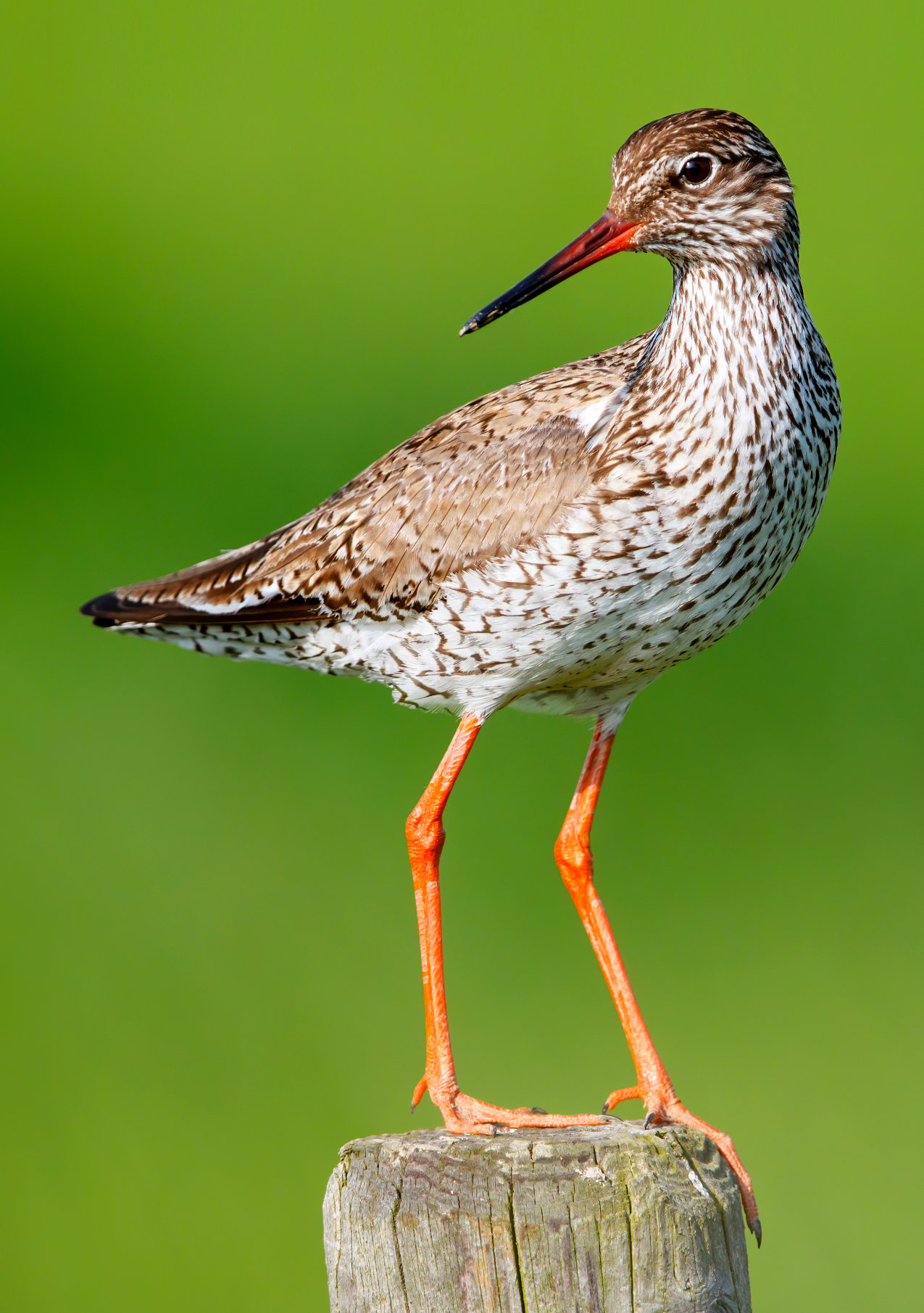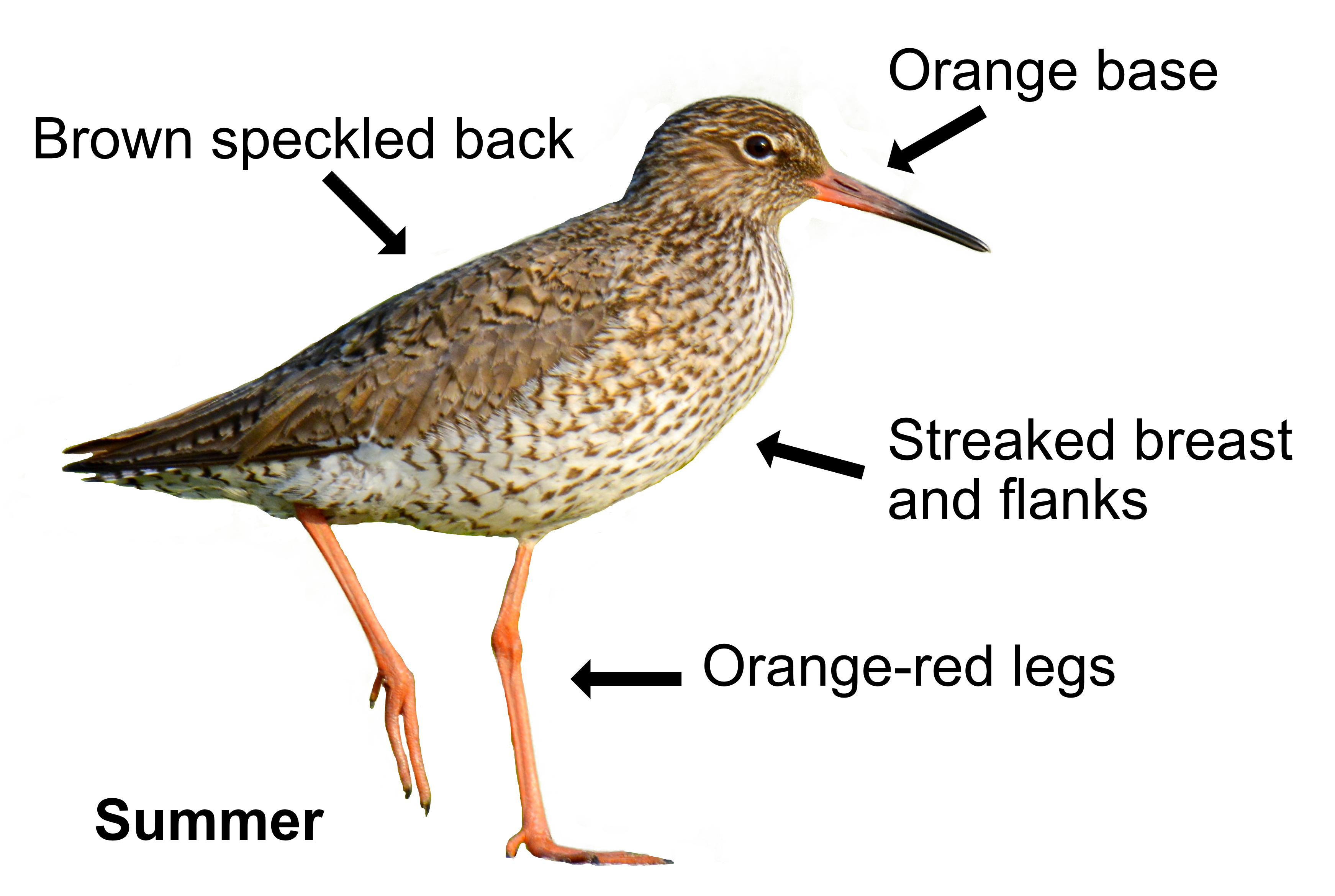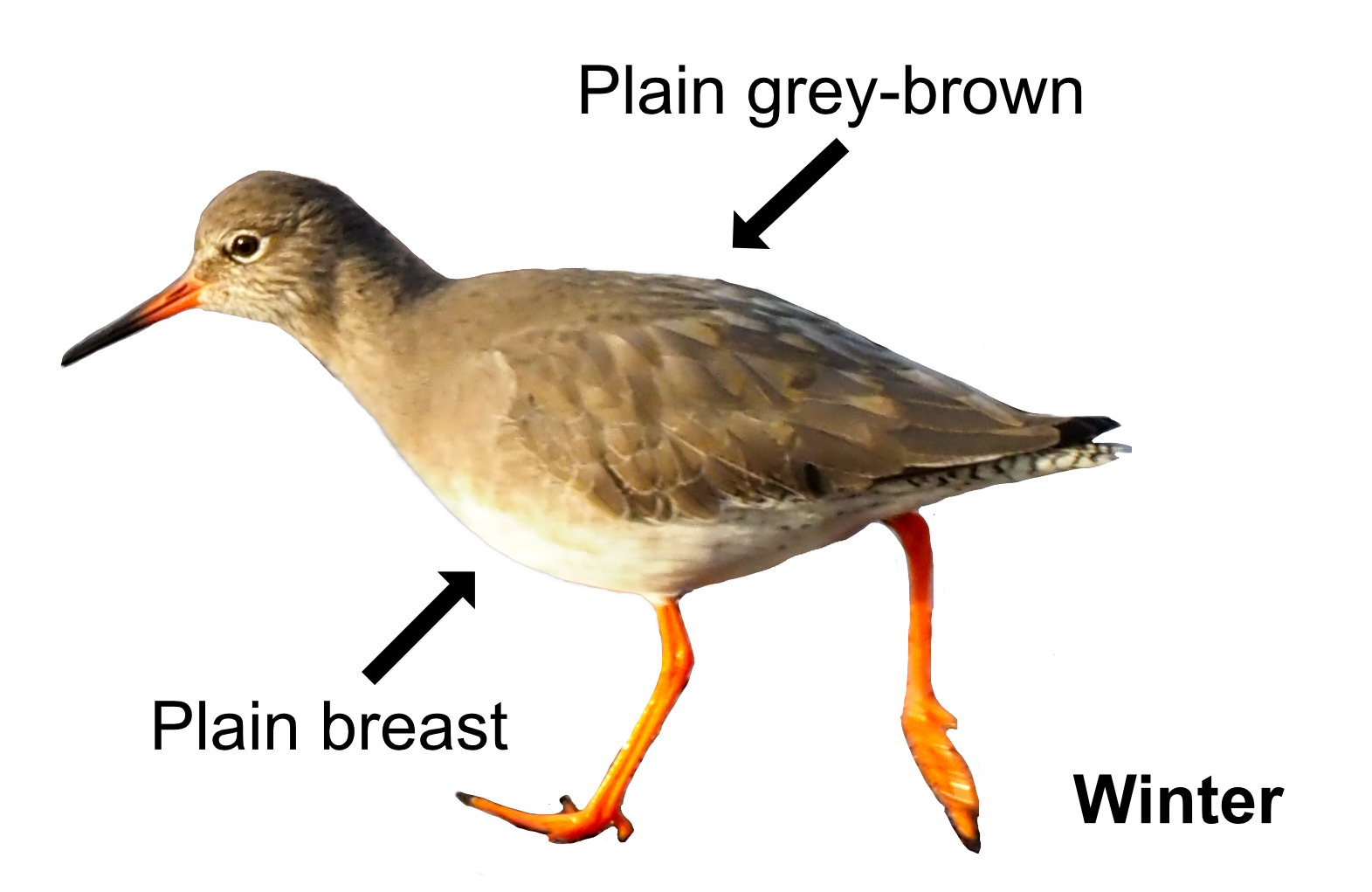
The Redshank is a noisy wader with obvious orange legs. Its nickname is the ‘watchdog of the marsh’ as at the first sign of danger a Redshank will take off uttering a shrill, piping “tew tew” alarm call. Redshanks stay here all year, moving south to coastal areas in winter where numbers can triple with Icelandic birds also arrive.

As its name suggests, the Redshank’s most distinctive feature is its bright orange-red legs, which rule out all other waders other than the Spotted Redshank and the Ruff. It is a medium-sized wader with an orange base to its medium-length bill (about 1-2 times the length of its head). In summer, Redshanks have a brown speckled back with a heavily streaked breast and flanks. In winter, they are a more uniform grey-brown with a plain breast and mottled flanks. When flying, there is an obvious white rear edge to the wing and a white V up the back. The flight is erratic with rapid wing beats and glides while making a “tu-udle tu-udle” call.
The Redshank is a typical wader, feeding in shallow water around lakes, marshes, mudflats and coastal wetlands. It eats shrimps, small fish, shellfish, snails, small crabs, and marine worms by probing with its bill. On land, it is quite happy to scoff down earthworms, beetles, flies and spiders.

Redshanks breed on open marshes, mires and salt marshes, particularly in Scotland and northern England. Look for one posed on top of a post watching out for danger and flying off noisily when you get too close. The nest is a scrape amongst rushes or grasses made by mum. She lays 4 eggs in May which hatch after 24 days. Both mum and dad incubate the eggs. The cute fluff ball chicks with their bright orange legs can feed themselves but are looked after by their parents. Before they can fly, which is about 30 days later, mum leaves the youngsters in the care of dad. Redshanks do their moult once they have finished breeding.
The Redshank. like many waders, is threatened by the loss of breeding and wintering habitats through wetland drainage, overgrazing of marshes, industrial development or sea-level rises flooding coastal sites. Their nests are also vulnerable to predators such as foxes, crows, mink and weasels. The Redshank is increasingly dependent on nature reserves and is Amber Listed. There are 25,000 Redshanks resident in Britain with numbers increasing to 130,000 in winter. The oldest ringed Redshank lived to 19.
Their Latin name is ’tringa totanus’ where ’tringa’ is from the Ancient Greek ’trungas’, a thrush-sized, white-rumped, tail-bobbing wading bird mentioned by Aristotle, and ’totanus’ is from ’totano’, the Italian name for a Redshank. Worldwide, there are six subspecies and the Redshank is closely related to the Wood Sandpiper.